(1513 products available)





















































































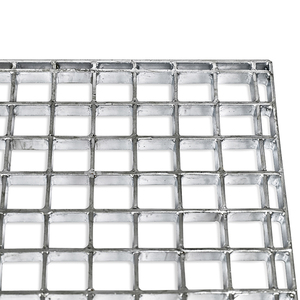

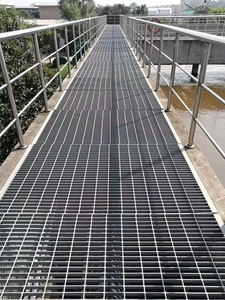










































































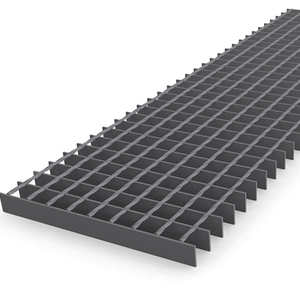

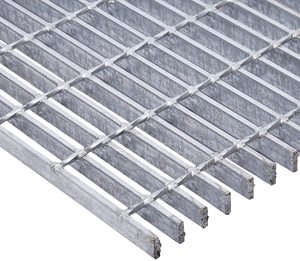

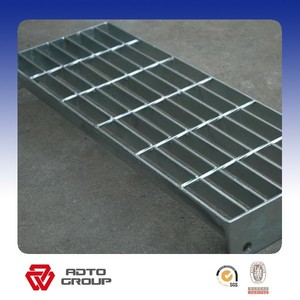
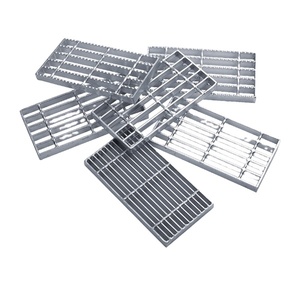
















































There are several types of factory ditch grates, constructed from various materials and featuring distinct designs to suit diverse needs and conditions. The following are some common types:
Metal Ditch Grates
Highly durable and robust, metal grates can be constructed from steel, cast iron, or aluminum. Often used where strength and long-term resilience are required, such as in heavy traffic areas or industrial zones, metal grates also have weight-carrying capabilities. Some metal grates may have a powder-coated finish to prevent rust and corrosion and enhance aesthetic value.
Concrete Ditch Grates
Commonly used in industrial or residential settings, concrete grates are often utilized because of their affordability and strength. Usually integrated into concrete drainage ditches, they come in forms that can be precast or poured in place. An advantage of concrete grates is their ability to bear heavy loads but typically lack slip-resistance and have a higher tendency to accumulate debris.
Cast Iron Ditch Grates
Strength, durability, and resistance to rust and corrosion can be found in cast iron grates, making them ideal for long-term use. Often applied in roadways, urban areas with landscaping, or areas exposed to heavy loads, they also provide aesthetic value due to decorative designs.
Stainless Steel Ditch Grates
Highly resistant to rust, corrosion, and elements such as water, chemicals, and salt, stainless steel grates are suitable for coastal, industrial, or any other high-moisture environments. Often easily cleaned, they offer a long-lasting solution for areas requiring frequent maintenance. Facilities in need of hygiene, such as food processing plants, may also use them.
Fiberglass Reinforced Plastic (FRP) Ditch Grates
An alternative to metal and concrete, fiberglass reinforced plastic (FRP) ditch grates are lightweight yet strong, and they resist rust and corrosion. Suitable for chemical plants, wastewater facilities, and other environments where metals may corrode, they also bear loads adequately even under harsh weather conditions. In addition, they have slip-resistant surfaces.
Adjustable Grate Ditch Covers
Featuring adjustable components that allow changes in height or angle to accommodate varying ditch depths or water flow, adjustable grates are commonly used in areas with fluctuating water levels. Customizable to suit specific needs, they are particularly useful in agricultural or drainage systems that require regular modifications.
Steel
One of the most common materials used for metal ditch grates, especially in commercial and industrial applications, is steel, on account of its strength and durability. Often galvanized or coated for resistance to corrosion, steel grates are heavy-duty and ideal for areas subjected to high traffic or heavy loads. They can as well be used in construction requiring structural support.
Cast Iron
Known for its exceptional durability and long lifespan, cast iron is a heavy, strong material that is often used in roadways and urban areas. Resisting rust and corrosion, its toughness makes it suitable for high-load applications. It also allows for decorative designs and integrates seamlessly into landscaping.
Aluminum
Lightweight yet strong, aluminum grates resist rust and corrosion, making them well-suited for areas exposed to moisture, including coastal regions. Often used in residential applications or areas where ease of installation and handling are required, they are also not as heavy as steel grates, which allows for easier transportation and installation. Despite being lighter, it still offers substantial strength and durability.
Concrete
Affordably providing strength and durability, concrete is commonly used to create grates integrated into drainage systems. Suitable for heavy loads, it is often poured in place to form a grate that becomes part of the surrounding structure. A decrease in flexibility and portability, as well as the possibility of cracking over time, are some disadvantages.
Stainless Steel
Requiring no maintenance and providing superior resistance to rust, corrosion, and chemicals, stainless steel is often used in high-maintenance areas, such as industrial facilities or places near the coast. While usually more expensive than other metals, it offers unmatched longevity and is also easy to clean, making it ideal for areas requiring high levels of hygiene.
Plastic
Although not as strong or durable as metal or concrete, plastic grates, especially high-density polyethylene (HDPE), are lightweight and affordably priced. Resistant to moisture, chemicals, and UV rays, they are suitable for agricultural, residential, or light industrial applications. More flexible and easier to handle, their lightweight nature allows for easy installation and transportation.
Composite Materials
Usually consisting of a combination of materials such as fiberglass reinforced plastic (FRP), composite materials provide a balance between strength and lightweight properties. Often used in areas where corrosion resistance is critical, such as chemical plants, they also come with cost-effective solutions. Capable of bearing moderate loads while being easy to install, these materials are flexible and portable.
Load Capacity
Considerations should include intended use and expected traffic levels. Grate materials and designs, which bear heavier loads, should be appropriate for high-traffic industrial areas with vehicles or machinery. If for light agricultural or residential use, grates with lower load capacities may suffice.
Material Compatibility
The surrounding environment determines the appropriate material for the ditch grates. For areas exposed to moisture or corrosive elements, like coastal regions or industrial sites, durable materials such as stainless steel or fiberglass-reinforced plastic may be necessary. In budget considerations, concrete or steel may provide a more cost-effective solution.
Slip Resistance and Safety Features
Ditch grates, particularly in areas prone to flooding or heavy rainfall, should have slip-resistant surfaces. Safety features such as barriers to prevent debris and mud from clogging the gratings, or their escaping through the openings, will ensure better functionality and safety for pedestrians and vehicles.
Maintenance Requirements
Maintenance also needs to be factored in when selecting grates. While stainless steel and aluminum may require little to no maintenance, other materials like galvanized steel or cast iron may need regular inspections for rust or corrosion. Concrete grates might require periodic checks for cracks, especially in high-temperature areas.
Customization and Aesthetic Value
Space-saving solutions into the existing infrastructure are available through customizable grates to fit specific ditch sizes or shapes. Additionally, often essential in urban settings or residential areas, the aesthetic value of the grates can integrate better with landscaping or architectural designs.
Environmental Impact
Consideration of environmental impact is necessary. Materials such as FRP have a lower impact on natural resources during production and often have a longer lifespan with lower maintenance needs. This minimizes overall resource consumption.
A1: Factory ditch grates are manufactured drainage covers or grates installed over ditches or channels to allow water to pass through while preventing the passage of debris, sediment, or sediment. They are often used in the agriculture industry and construction/real estate industry.
A2: Commonly used materials include metal (steel, cast iron, or aluminum), concrete, stainless steel, fiberglass reinforced plastic (FRP), and plastic. Each material comes with its own advantages, bearing specific environmental conditions and loading requirements.
A3: Key deciding factors include load capacity, type of material, maintenance requirements, and environmental impact. Clarifying the intended use, surrounding environment, and aesthetic or budgetary concerns will lead to the right choice.
A4: Functioning as barriers to control water flow, factory ditch grates, at the same time, filter out unwanted debris and sediments, thereby preventing clogging and ensuring the overall efficiency of drainage systems while maintaining the safety and cleanliness of the area.
A5: Plastic grates, particularly high-density polyethylene (HDPE), are lightweight and affordably priced. Resistant to moisture, chemicals, and UV rays, they are suitable for agricultural, residential, or light industrial applications. More flexible and easier to handle, their lightweight nature allows for easy installation and transportation.